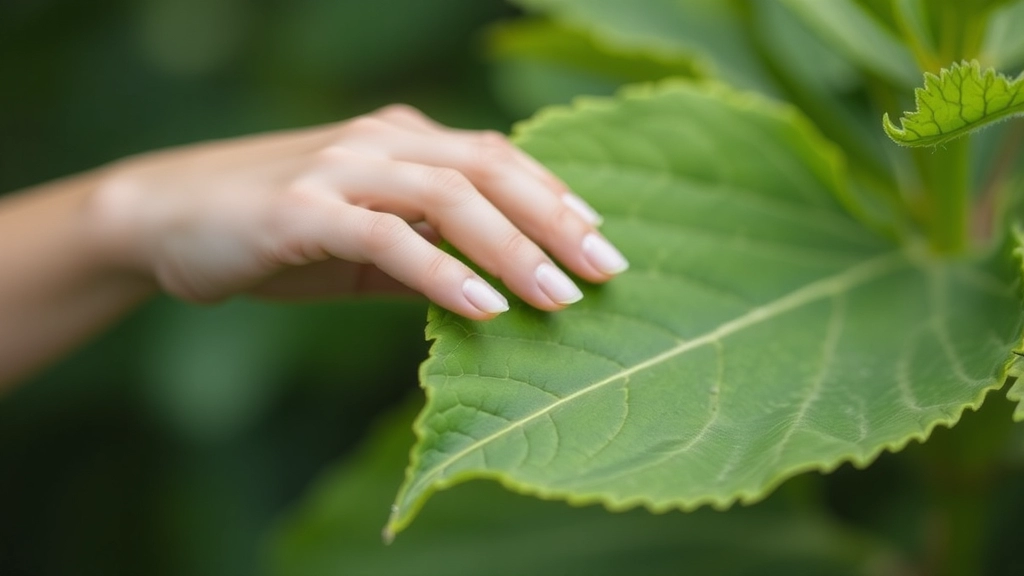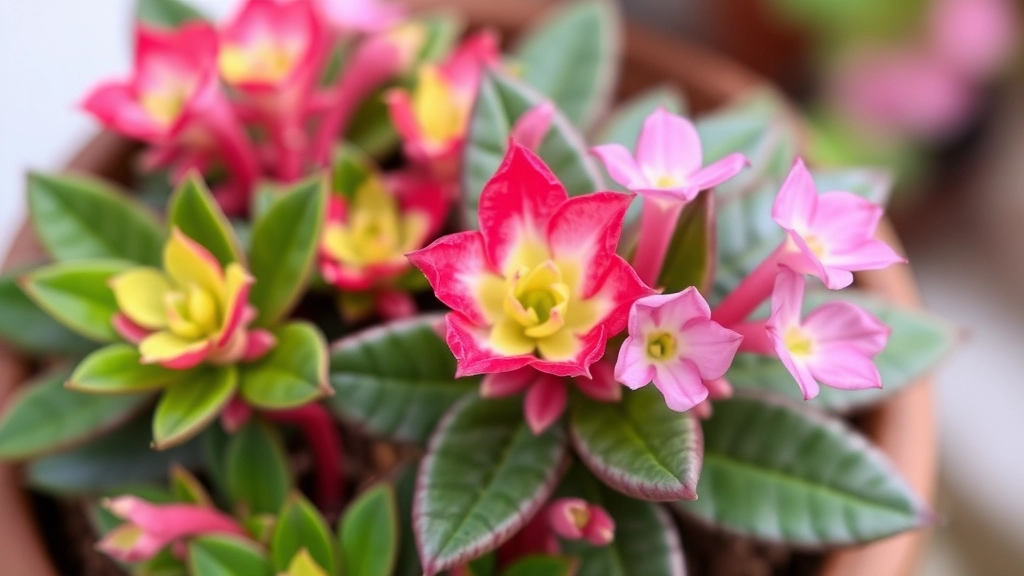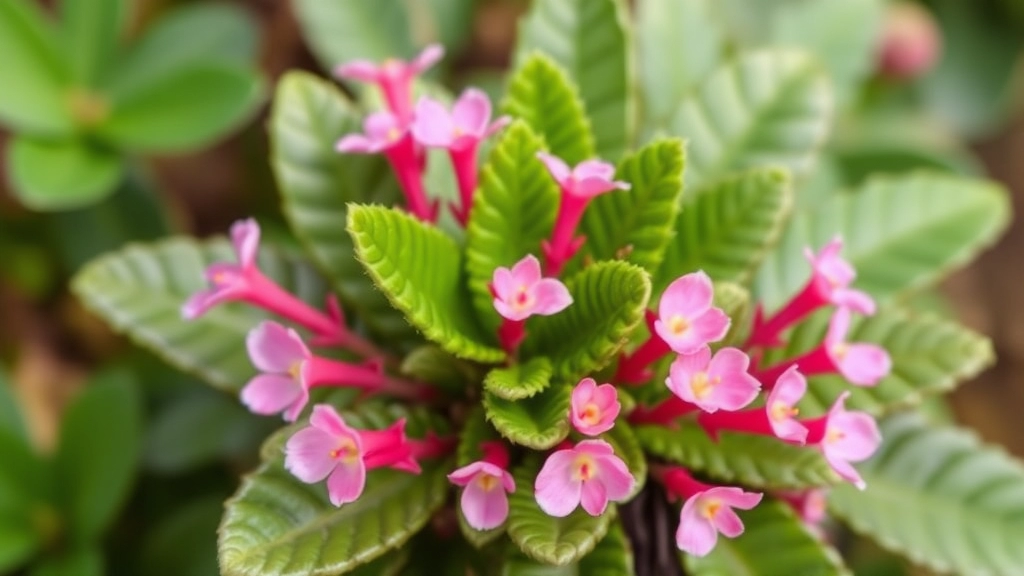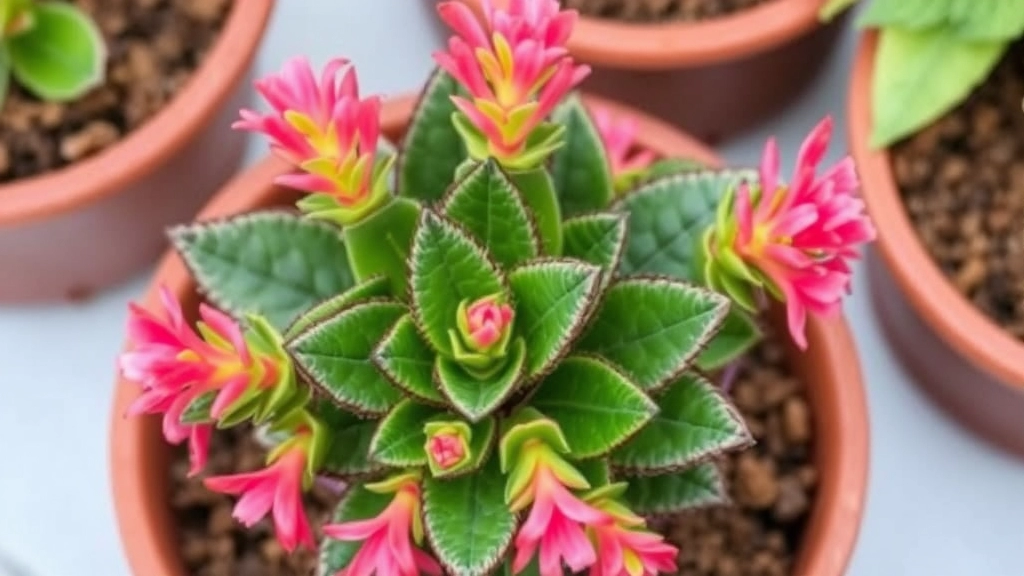Understanding Kalanchoe Pinnata
Potential Side Effects
When considering the use of Kalanchoe Pinnata, it’s crucial to be aware of potential side effects. This plant, often used for its medicinal properties, can have various impacts on different individuals. Common side effects include:
- Digestive issues
- Skin irritation
- Allergic reactions
Understanding these risks can help you make informed decisions about its use.
Special Considerations
Special caution is required for pregnant and nursing women, as well as those with liver conditions or those taking medications. Kalanchoe Pinnata can interact with certain drugs and exacerbate existing health issues. Always consult a healthcare professional before incorporating this plant into your regimen to ensure it’s safe for your specific situation.
Common Side Effects of Kalanchoe Pinnata
When considering the use of Kalanchoe Pinnata, many people have valid concerns about potential side effects.
While this plant is often praised for its medicinal properties, it’s essential to be aware of the common side effects that may arise.
Potential Side Effects
- Gastrointestinal Issues
Some users report experiencing nausea, vomiting, or diarrhea after consuming Kalanchoe Pinnata.
Tip: Start with a small dosage to gauge your body’s reaction. - Fatigue and Dizziness
A few individuals have noted feelings of fatigue or dizziness, particularly when taking higher doses.
Tip: Ensure you stay hydrated and consider reducing your intake if these symptoms occur. - Headaches
Headaches can also be a common complaint, possibly linked to the active compounds in the plant.
Tip: Monitor your intake and discuss any persistent headaches with a healthcare professional. - Skin Reactions
When applied topically, some may experience redness or irritation.
Tip: Conduct a patch test before full application to avoid adverse reactions.
For more comprehensive information on the medicinal uses and benefits of this plant, check out our guide on the medicinal uses of Kalanchoe Pinnata. Additionally, if you’re interested in the health benefits of Kalanchoe Pinnata, our detailed article on health benefits of Kalanchoe Pinnata might be useful.
Allergic Reactions and Sensitivities

Have you ever wondered if Kalanchoe Pinnata could trigger an allergic reaction? You’re not alone. Many people are curious about how this plant might affect them, especially if they have a history of allergies or sensitivities.
What to Watch For
Kalanchoe Pinnata, while often celebrated for its health benefits, can cause allergic reactions in some individuals. Here’s what to keep an eye out for:
- Skin Reactions: Redness, itching, or rashes may occur if the plant comes into contact with your skin.
- Respiratory Issues: Some people may experience sneezing, coughing, or difficulty breathing after inhaling dust from the dried leaves.
- Gastrointestinal Symptoms: Nausea, vomiting, or stomach cramps can also be signs of an allergic response.
Who’s at Risk?
If you have a history of allergies—especially to plants or herbal remedies—it’s wise to approach Kalanchoe Pinnata with caution.
What to Do if You React
If you experience any symptoms after using Kalanchoe Pinnata, it’s essential to:
- Stop using the plant immediately.
- Consult a healthcare professional for advice tailored to your situation.
A Personal Story
I remember a friend who was excited to try Kalanchoe Pinnata for its reputed benefits. Unfortunately, she developed a rash after just one use. It was a wake-up call for her about the importance of knowing your body’s reactions.
Kalanchoe Pinnata and Liver Health
Many people wonder about the potential effects of Kalanchoe Pinnata on liver health.
This succulent plant has been praised for its medicinal properties, but it’s important to consider its implications for our liver.
Potential Liver Toxicity
Research suggests that Kalanchoe Pinnata may contain compounds that can be hepatotoxic, meaning they could potentially harm liver cells.
If you have pre-existing liver conditions, it’s crucial to approach this herb with caution.
- Signs of Liver Issues:
- Jaundice (yellowing of the skin and eyes)
- Dark urine
- Abdominal pain
- Fatigue
These symptoms should not be ignored, and if experienced after using Kalanchoe Pinnata, it’s advisable to consult a healthcare professional immediately.
Safe Usage Recommendations
To mitigate risks to liver health, consider the following guidelines:
- Limit Dosage: Start with the lowest effective dose to assess tolerance.
- Monitor Symptoms: Keep track of any unusual symptoms when using the plant.
- Consult a Doctor: Always speak with a healthcare provider before starting any new herbal treatment, especially if you have liver concerns.
For more detailed information on the health benefits of Kalanchoe Pinnata, you can explore our complete guide on Kalanchoe Pinnata health benefits.
Additionally, if you’re interested in the broader medicinal uses of this plant, check out our page on medicinal uses and applications of Kalanchoe Pinnata.
Risks for Pregnant and Nursing Women

When considering herbal remedies like Kalanchoe Pinnata, it’s crucial to understand the specific risks for pregnant and nursing women. Many expectant and new mothers often seek natural alternatives for health concerns, but it’s essential to tread carefully.
Potential Risks During Pregnancy:
- Uterine Stimulation: Kalanchoe Pinnata may have properties that could stimulate the uterus, potentially leading to complications such as premature labour.
- Hormonal Effects: The plant might influence hormonal levels, which can be particularly sensitive during pregnancy.
Concerns While Nursing:
- Transfer Through Breast Milk: There’s limited research on how Kalanchoe Pinnata affects breast milk composition and whether it could impact a nursing infant.
- Allergic Reactions: Nursing infants may be more susceptible to allergens, and introducing Kalanchoe Pinnata could pose risks if the mother experiences an allergic reaction.
Recommendations:
- Consult Healthcare Providers: It’s always best to discuss any herbal supplements with a healthcare professional before use during pregnancy or breastfeeding.
- Avoid Self-Medication: Relying on personal research can be risky. Always seek expert advice.
When considering the use of Kalanchoe Pinnata, one major concern for many is its potential to interact with other medications.
### What should you watch out for?
– **Anticoagulants and Antiplatelet Drugs**: Kalanchoe Pinnata may have blood-thinning properties. If you’re taking medications like warfarin or aspirin, the combination could increase your risk of bleeding. Always consult your healthcare provider.
– **Diuretics**: This plant may affect fluid balance in the body. If you’re on diuretics, it’s crucial to monitor your electrolyte levels closely.
– **Antihypertensives**: Kalanchoe Pinnata may lower blood pressure. If you are on medication for hypertension, combining it with Kalanchoe could lead to hypotension, causing dizziness or fainting.
– **Antidiabetic Medications**: There’s a possibility that Kalanchoe Pinnata could influence blood sugar levels. If you are on insulin or other diabetic medications, be vigilant about monitoring your blood glucose.
– **Liver Metabolized Drugs**: If your medications are processed by the liver, Kalanchoe Pinnata might alter their effectiveness. This includes many common medications, so discussing this with your healthcare provider is essential.
### Key Takeaways
– Always inform your healthcare provider about any herbal supplements you are using.
– Monitor for any unusual side effects when introducing [Kalanchoe Pinnata](https://planthq.org/how-to-grow-and-care-for-kalanchoe-pinnata-tips-and-benefits/) into your routine.
– For more detailed information on the health benefits and medicinal uses of Kalanchoe Pinnata, you can refer to this [comprehensive guide](https://planthq.org/health-benefits-of-kalanchoe-pinnata-a-complete-guide/).
Digestive Issues Associated with Kalanchoe Pinnata

So, you’ve heard about Kalanchoe Pinnata and its potential benefits, but what about its impact on your digestive system?
Many folks have reported some digestive hiccups after using this plant. It’s important to be aware of these issues before diving in. Here are some common concerns:
- Nausea: Some users experience a queasy stomach, especially if taken in larger quantities.
- Diarrhoea: This can be a real issue for some, leading to uncomfortable trips to the loo.
- Stomach cramps: A few people have mentioned feeling cramps after consumption, which can be quite bothersome.
- Bloating: If you feel like a balloon after taking Kalanchoe, you’re not alone.
It’s crucial to listen to your body. If you notice any of these symptoms after using Kalanchoe Pinnata, it might be worth reconsidering its use or adjusting the dosage.
To ease any digestive discomfort, consider these tips:
- Start small: Begin with a lower dosage to see how your body reacts.
- Stay hydrated: Drink plenty of water to help your system cope.
- Pair with food: Taking it with meals might help minimise nausea and cramps.
If digestive issues persist, it’s a good idea to consult a healthcare professional.
Skin Irritation from Topical Use
When considering the use of Kalanchoe Pinnata, many people may not be aware of the potential for skin irritation, especially when applied topically.
Understanding Skin Reactions
Topical application of Kalanchoe Pinnata can lead to various skin reactions. Common issues include:
- Redness and Inflammation: Some individuals may experience redness or swelling at the site of application.
- Itching and Rash: Itching is a frequent complaint, often accompanied by a rash that can vary in severity.
- Burning Sensation: A burning feeling may occur, particularly with sensitive skin.
Who is Most at Risk?
Certain individuals may be more prone to skin irritation from Kalanchoe Pinnata:
- Those with Sensitive Skin: If you have a history of skin sensitivities, proceed with caution.
- Allergy Sufferers: People with allergies to similar plants may also react negatively.
- Existing Skin Conditions: Conditions like eczema or psoriasis can exacerbate irritation.
Tips to Minimise Skin Irritation
If you decide to use Kalanchoe Pinnata topically, consider these tips to reduce the risk of irritation:
- Patch Test: Always conduct a patch test on a small area before full application.
- Dilution: Mix Kalanchoe Pinnata with a carrier oil to lessen its potency.
- Limit Usage: Use it sparingly and monitor your skin’s reaction.
For more comprehensive information on the benefits and applications of this plant, check out our guide on using Kalanchoe Pinnata for health benefits and our detailed article on the medicinal uses and health benefits of Kalanchoe Pinnata.
### Safe Dosage Guidelines for Kalanchoe Pinnata
So, you’re curious about how much Kalanchoe Pinnata is safe to take? You’re not alone. Many folks want to reap the benefits without overdoing it.
#### Recommended Dosage
- General Use: For most people, a typical dose ranges from 500 mg to 1,500 mg per day.
- Tea Preparation: If you’re brewing a tea, steep about 5-10 leaves in hot water for 10-15 minutes.
- Topical Use: When applying it topically, start with a small amount to see how your skin reacts.
#### A Few Key Points to Keep in Mind
- Start Low: It’s wise to begin with the lower end of the dosage and gradually increase it. This way, you can monitor how your body responds.
- Listen to Your Body: If you experience any side effects, reduce the dosage or stop using it altogether.
- Consult a Pro: Always chat with a healthcare professional, especially if you’re on other medications or have health conditions.
#### Special Considerations
- Pregnant or Nursing?: It’s best to avoid Kalanchoe Pinnata during pregnancy or while breastfeeding. Safety first!
- Age Matters: Kids and older adults should be extra cautious.
As we delve deeper into the considerations surrounding Kalanchoe Pinnata, it’s crucial to identify specific groups that may need to steer clear of this plant.
### Individuals with Pre-existing Conditions
– **Liver Issues:** If you have liver disease or any liver-related concerns, it’s wise to avoid Kalanchoe Pinnata. Its compounds can potentially exacerbate liver conditions.
– **Kidney Problems:** Those with kidney disorders should also exercise caution, as the plant may place additional strain on these organs.
### Pregnant and Nursing Women
Pregnant and breastfeeding women should avoid Kalanchoe Pinnata. The effects of this plant on pregnancy and lactation are not well-studied, making it better to err on the side of caution.
### Allergies and Sensitivities
If you have known allergies to other plants in the Crassulaceae family, it’s advisable to avoid Kalanchoe Pinnata. Allergic reactions can vary widely, and it’s better to be safe than sorry.
### Individuals on Specific Medications
Those taking anticoagulants or medications that affect liver function should consult a healthcare professional before using Kalanchoe Pinnata. The potential for drug interactions is a significant concern.
### Children and Infants
Kalanchoe Pinnata is not recommended for children or infants due to the lack of research on its safety for this age group.
Tips for Reducing Side Effects of Kalanchoe Pinnata

So, you’re keen on using Kalanchoe Pinnata but worried about those pesky side effects? You’re not alone! Many folks share the same concerns, and there are definitely ways to make your experience smoother.
Here are some practical tips to help you navigate potential side effects:
- Start Slow: If you’re new to Kalanchoe Pinnata, begin with a small dose. This gives your body a chance to adjust without overwhelming it.
- Stay Hydrated: Drinking plenty of water can help flush out toxins and may ease digestive issues. Aim for at least 8 glasses a day.
- Monitor Your Body: Keep a journal of how you feel after taking it. Noticing patterns can help you identify what works and what doesn’t.
- Consult a Professional: Before diving in, chat with a healthcare professional, especially if you’re on other medications or have existing health conditions.
- Avoid Mixing: If you’re taking other herbal supplements or medications, it might be best to avoid mixing them until you know how Kalanchoe Pinnata affects you.
- Consider Timing: Taking it with food can sometimes help reduce digestive discomfort. Experiment with different times to see what suits you best.
- Topical Caution: If using it on your skin, do a patch test first. Apply a small amount and wait 24 hours to check for any irritation.
- Listen to Your Body: If you feel any unusual symptoms, don’t hesitate to stop using it and consult a healthcare professional.
By following these tips, you can enjoy the benefits of Kalanchoe Pinnata while minimising the side effects.
When to Consult a Healthcare Professional
Navigating the world of herbal remedies can be daunting, especially when it comes to plants like Kalanchoe Pinnata.
You might be wondering: When should I seek professional advice?
- Persistent Side Effects: If you experience ongoing side effects that do not subside, it’s time to reach out to a doctor. Symptoms like nausea, dizziness, or skin irritation should not be ignored.
- Allergic Reactions: If you notice signs of an allergic reaction, such as swelling, rash, or difficulty breathing, seek immediate medical attention.
- Pregnancy or Breastfeeding: Women who are pregnant or nursing should consult a healthcare provider before using Kalanchoe Pinnata, given its potential risks.
- Pre-existing Conditions: If you have liver issues or any chronic health conditions, discussing the use of Kalanchoe Pinnata with your healthcare provider is crucial.
- Medication Interactions: If you are on other medications, it’s wise to check for potential interactions. A healthcare professional can provide guidance on safe usage.
- Digestive Problems: If you experience severe digestive issues after using Kalanchoe Pinnata, seeking medical advice is recommended.
Being proactive about your health can make all the difference. For more information on the health benefits of Kalanchoe Pinnata and its various uses, check out our comprehensive guides. Additionally, if you’re interested in its medicinal applications, you can learn more about the medicinal uses and health benefits of Kalanchoe Pinnata.
FAQs on Kalanchoe Pinnata Side Effects
What are the common allergic reactions to Kalanchoe Pinnata?
Kalanchoe Pinnata can cause various allergic reactions, including skin redness, itching, rashes, respiratory issues like sneezing and coughing, and gastrointestinal symptoms such as nausea, vomiting, and stomach cramps.
Who is at risk of experiencing side effects from Kalanchoe Pinnata?
Individuals with a history of allergies, particularly to plants or herbal remedies, should approach Kalanchoe Pinnata with caution. Pregnant and nursing women should also be wary due to potential risks.
What should I do if I experience side effects from Kalanchoe Pinnata?
If you experience any adverse reactions, stop using the plant immediately and consult a healthcare professional for personalized advice.
Are there any risks associated with using Kalanchoe Pinnata during pregnancy or nursing?
Yes, Kalanchoe Pinnata may stimulate the uterus, potentially leading to premature labor, and could influence hormonal levels. Nursing mothers should be cautious as the plant’s effects on breast milk composition and potential allergic reactions in infants are not well-researched.
What digestive issues can Kalanchoe Pinnata cause?
Common digestive issues include nausea, diarrhea, stomach cramps, and bloating. It’s important to start with a small dose and monitor your body’s response.
What is the recommended dosage for Kalanchoe Pinnata?
For general use, a typical dose ranges from 500 mg to 1,500 mg per day. If brewing tea, steep about 5-10 leaves in hot water for 10-15 minutes. For topical use, start with a small amount to see how your skin reacts.
How can I reduce the side effects of Kalanchoe Pinnata?
Start with a small dose, stay hydrated, monitor your body’s response, consult a healthcare professional, avoid mixing with other supplements or medications, consider timing your intake with food, and perform a patch test for topical use.
Is Kalanchoe Pinnata safe for children and older adults?
Children and older adults should be extra cautious when using Kalanchoe Pinnata due to potential sensitivity and side effects. Always consult a healthcare professional before use.
